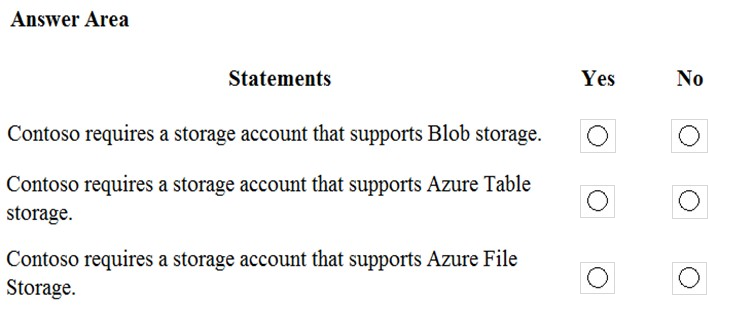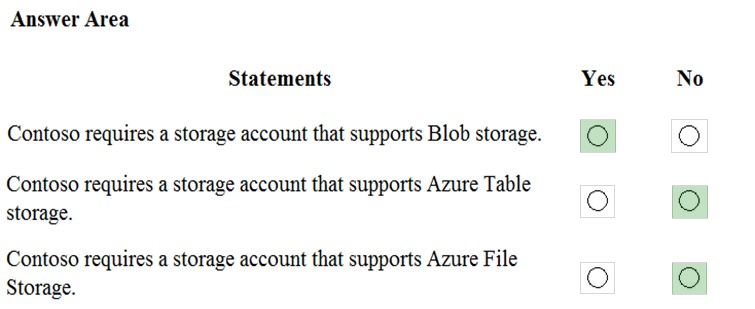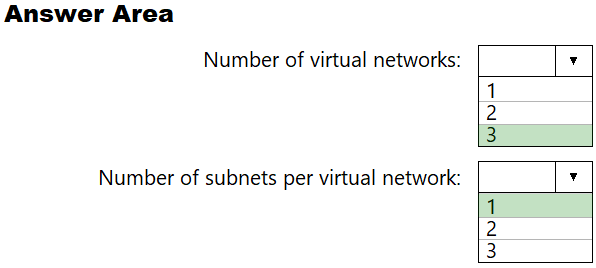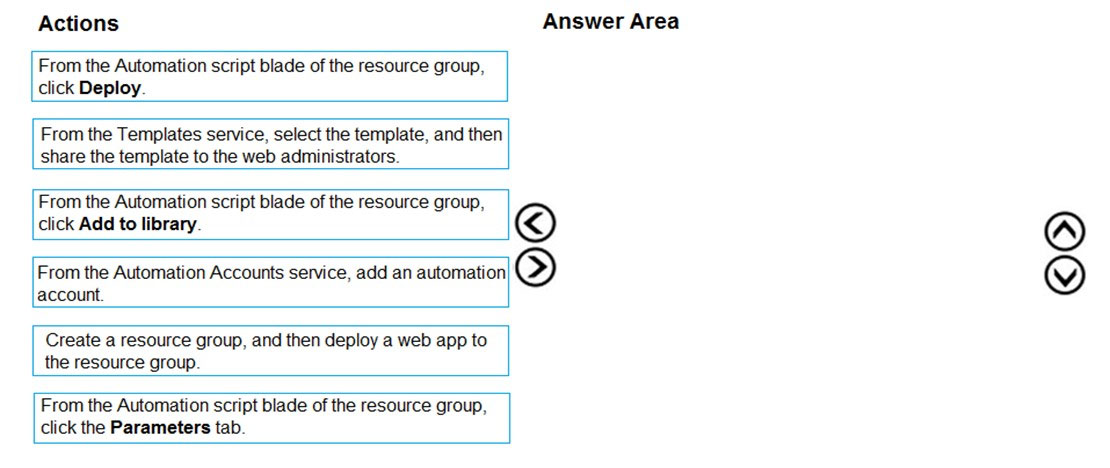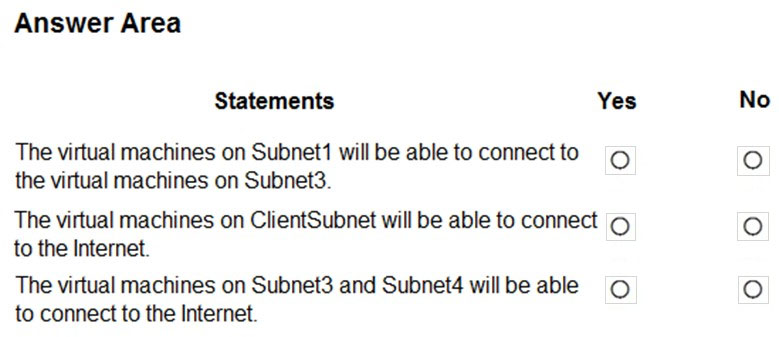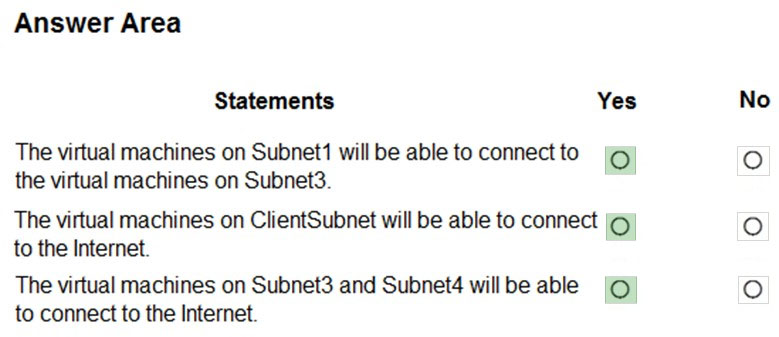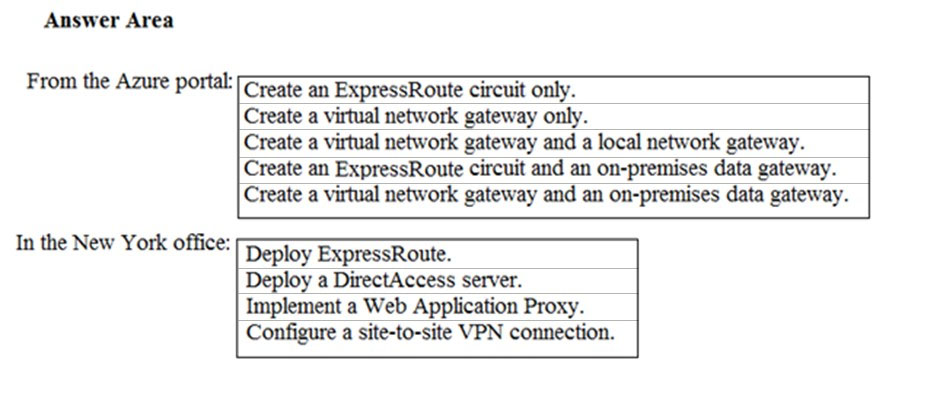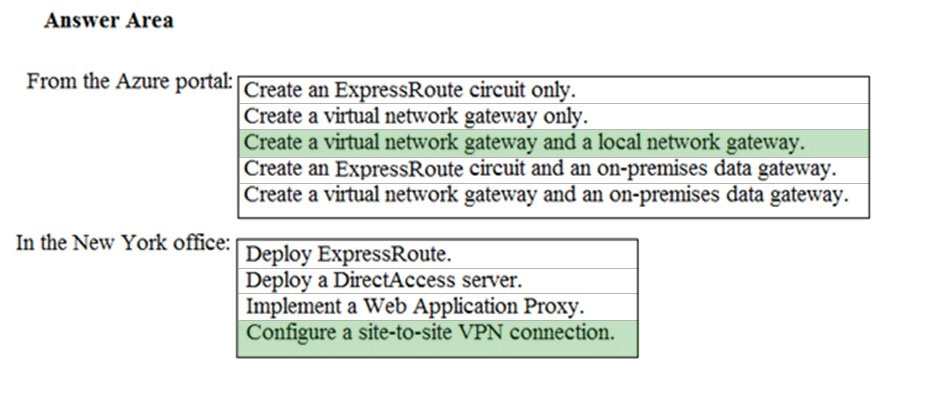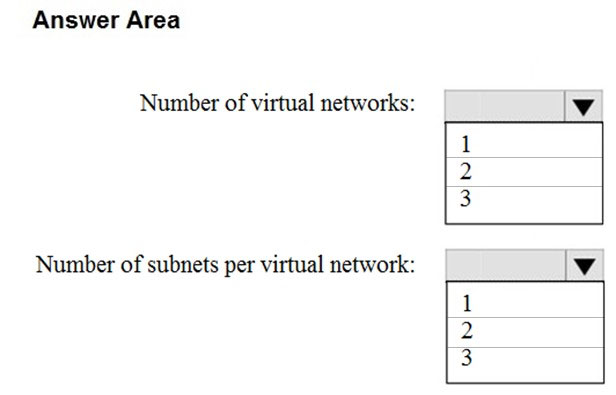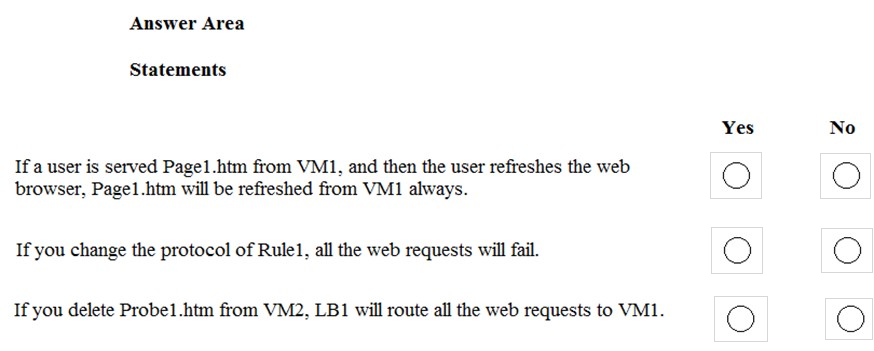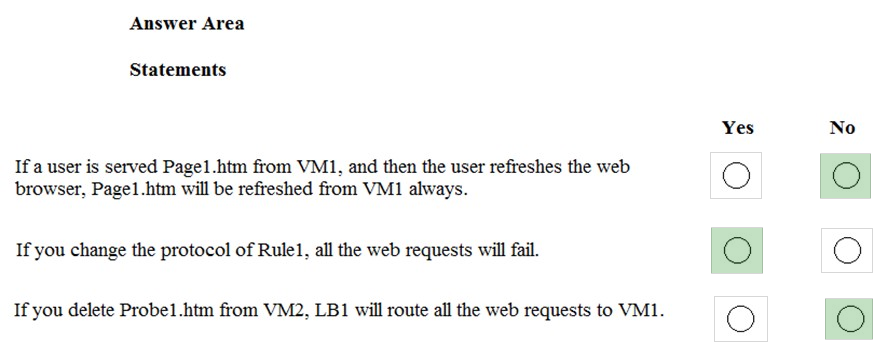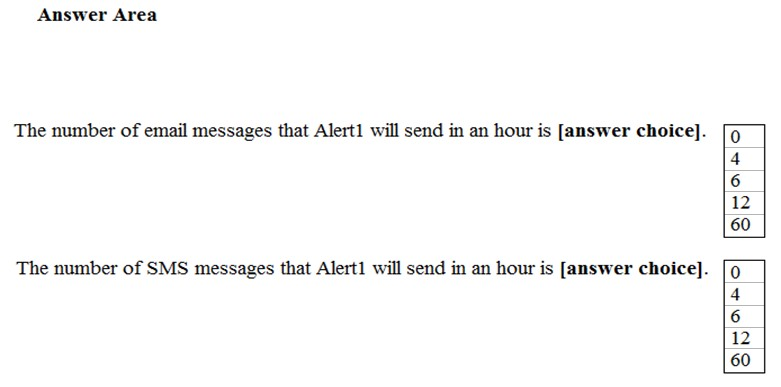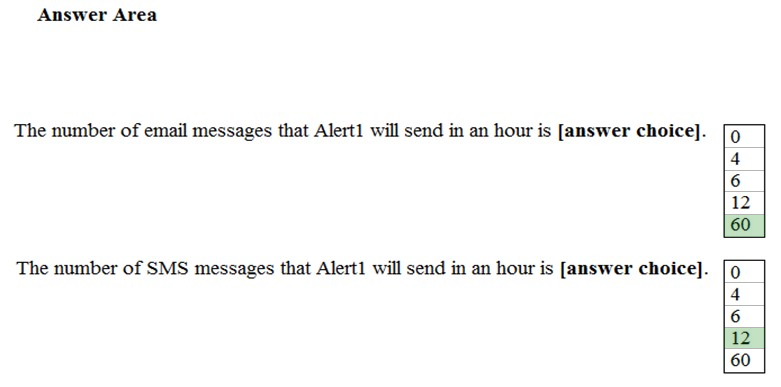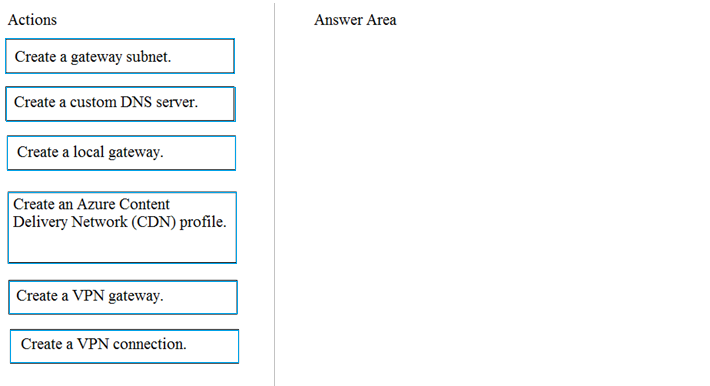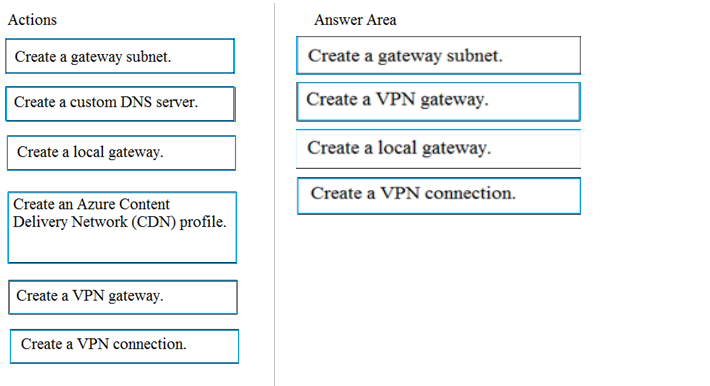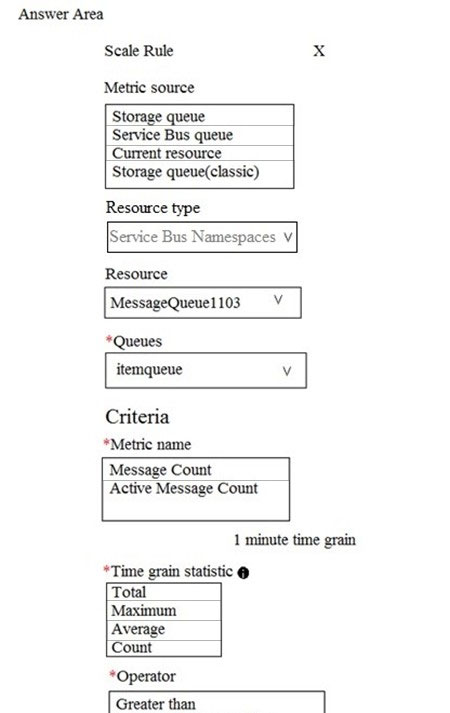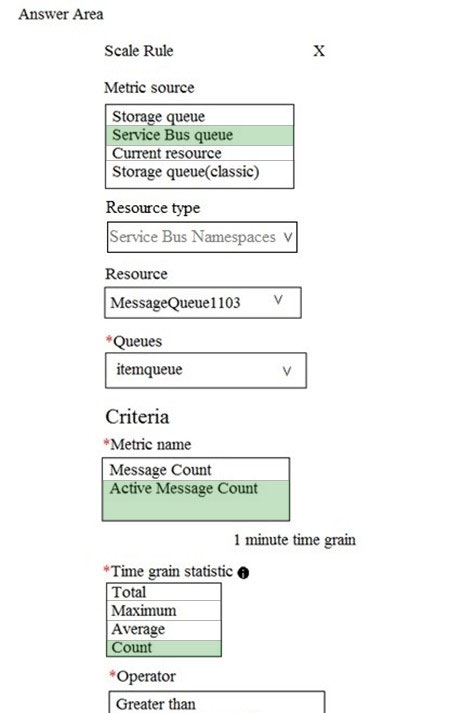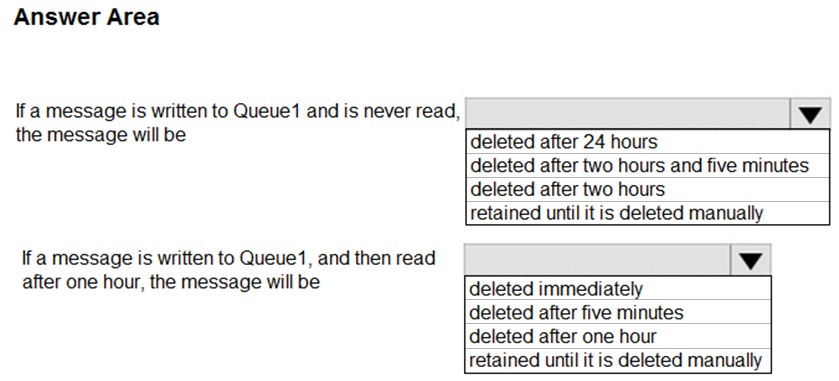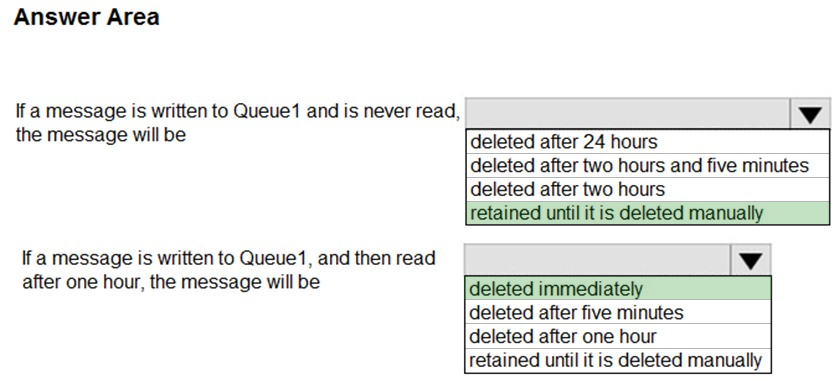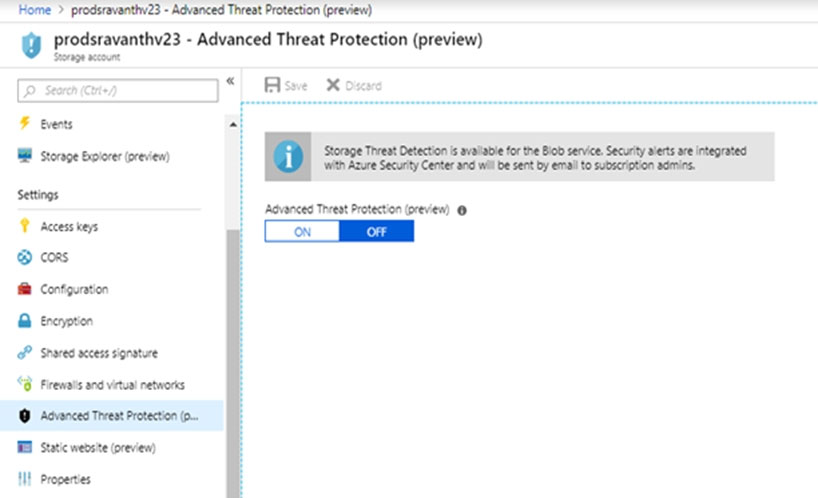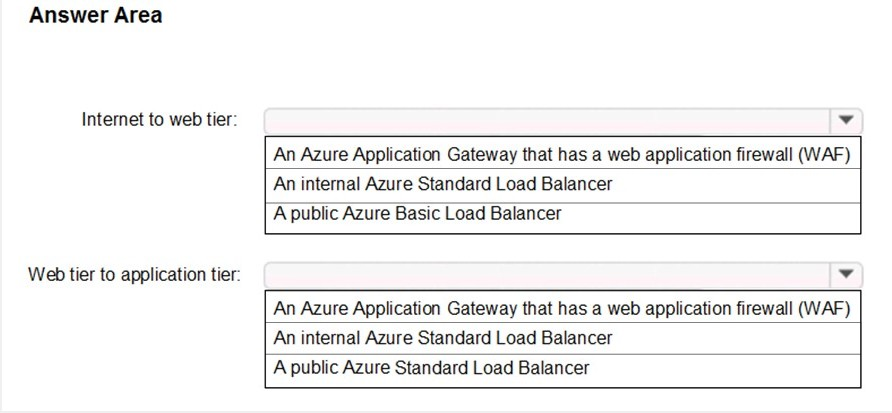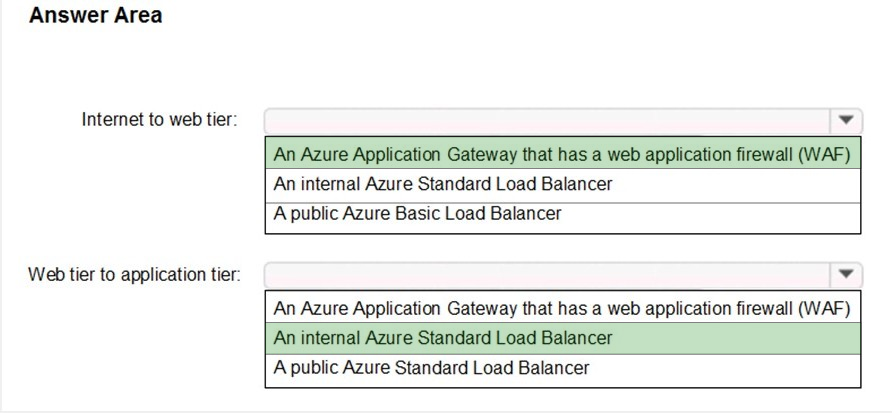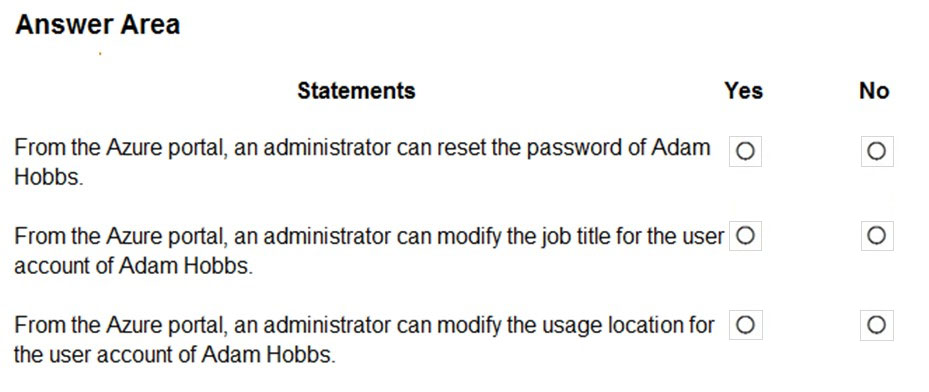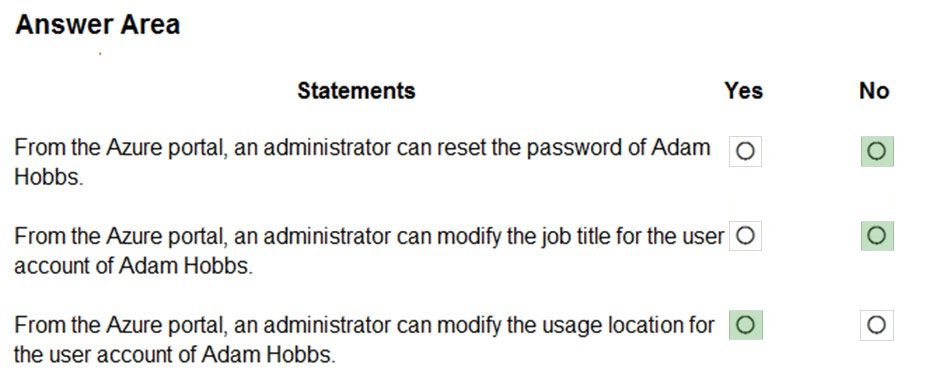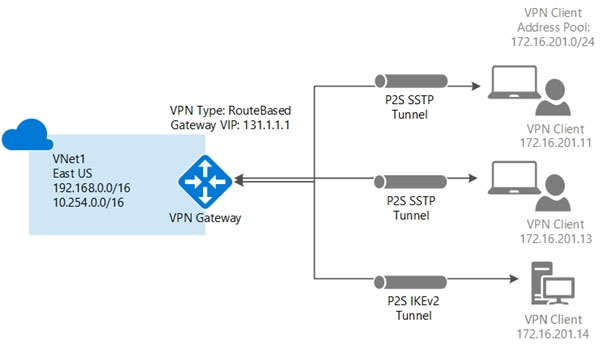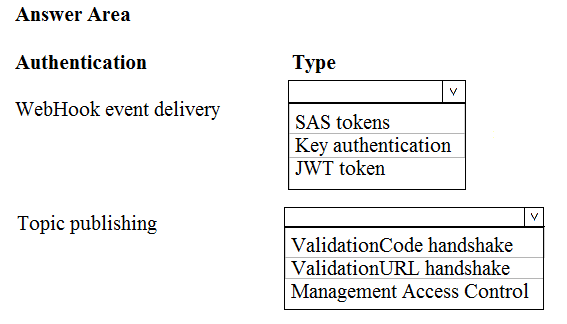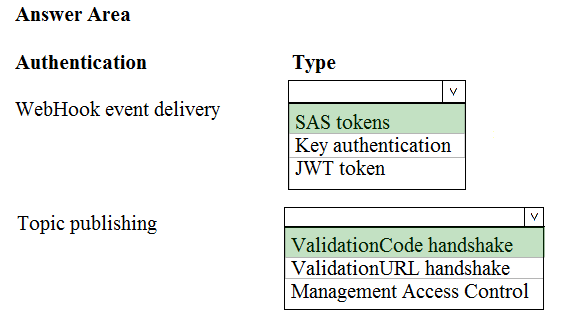AZ-303 Practice Test Free – 50 Questions to Test Your Knowledge
Are you preparing for the AZ-303 certification exam? If so, taking a AZ-303 practice test free is one of the best ways to assess your knowledge and improve your chances of passing. In this post, we provide 50 free AZ-303 practice questions designed to help you test your skills and identify areas for improvement.
By taking a free AZ-303 practice test, you can:
- Familiarize yourself with the exam format and question types
- Identify your strengths and weaknesses
- Gain confidence before the actual exam
50 Free AZ-303 Practice Questions
Below, you will find 50 free AZ-303 practice questions to help you prepare for the exam. These questions are designed to reflect the real exam structure and difficulty level.
You need to move the blueprint files to Azure. What should you do?
A. Use the Azure Import/Export service.
B. Use Azure Storage Explorer to copy the files.
C. Generate a shared access signature (SAS). Map a drive, and then copy the files by using File Explorer.
D. Generate an access key. Map a drive, and then copy the files by using File Explorer.
HOTSPOT - You need to identify the storage requirements for Contoso. For each of the following statements, select Yes if the statement is true. Otherwise, select No. NOTE: Each correct selection is worth one point. Hot Area:
You need to implement a backup solution for App1 after the application is moved. What should you create first?
A. an Azure Backup Server
B. a Recovery Services vault
C. a backup policy
D. a recovery plan
You need to move the blueprint files to Azure. What should you do?
A. Use the Azure Import/Export service.
B. Generate a shared access signature (SAS). Map a drive, and then copy the files by using File Explorer.
C. Use Azure Storage Explorer to copy the files.
D. Generate an access key. Map a drive, and then copy the files by using File Explorer.
HOTSPOT - You need to identify the storage requirements for Contoso. For each of the following statements, select Yes if the statement is true. Otherwise, select No. NOTE: Each correct selection is worth one point. Hot Area:
You need to recommend an identity solution that meets the technical requirements. What should you recommend?
A. password hash synchronization and single sign-on (SSO)
B. federated single sign-on (SSO) and Active Directory Federation Services (AD FS)
C. Pass-thorough Authentication and single sign-on (SSO)
D. cloud-only user accounts
HOTSPOT - You need to recommend a solution for App1. The solution must meet the technical requirements. What should you include in the recommendation? To answer, select the appropriate options in the answer area. NOTE: Each correct selection is worth one point. Hot Area:
You need to define a custom domain name for Azure AD to support the planned infrastructure. Which domain name should you use?
A. ad.humongousinsurance.com
B. humongousinsurance.local
C. humongousinsurance.com
D. humongousinsurance.onmicrosoft.com
You need to resolve the licensing issue before you attempt to assign the license again. What should you do?
A. From the Directory role blade, modify the directory role
B. From the Groups blade, invite the user accounts to a new group
C. From the Profile blade, modify the usage location
DRAG DROP - You need to prepare the environment to ensure that the web administrators can deploy the web apps as quickly as possible. Which three actions should you perform in sequence? To answer, move the appropriate actions from the list of actions to the answer area and arrange them in the correct order. Select and Place:
HOTSPOT - You are evaluating the connectivity between the virtual machines after the planned implementation of the Azure networking infrastructure. For each of the following statements, select Yes if the statement is true. Otherwise, select No. Hot Area:
HOTSPOT - You need to meet the connection requirements for the New York office. What should you do? To answer, select the appropriate options in the answer area. NOTE: Each correct selection is worth one point. Hot Area:
What should you create to configure AG2?
A. multi-site listeners
B. URL path-based routing rules
C. basic routing rules
D. an additional public IP address
E. basic listeners
HOTSPOT - You need to recommend a solution for App1. The solution must meet the technical requirements. What should you include in the recommendation? To answer, select the appropriate options in the answer area. NOTE: Each correct selection is worth one point. Hot Area:
HOTSPOT - You have an Azure subscription named Subscription1 that contains the resources in the following table.A web server runs on VM1 and VM2. When you request a webpage named Page1.htm from the Internet, LB1 balances the web requests to VM1 and VM2., and you receive a response. On LB1, you have a rule named Rule1 as shown in the Rule1 exhibit. (Click the Exhibit tab.)
You have a health probe named Probe1 as shown in the Probe1 exhibit. (Click the Exhibit tab.)
For each of the following statements, select Yes if the statement is true. Otherwise, select No. NOTE: Each correct selection is worth one point. Hot Area:
You have an Azure subscription named Subscription1 that contains two Azure networks named VNet1 and VNet2. VNet1 contains a VPN gateway named VPNGW1 that uses static routing. There is a site-to-site VPN connection between your on-premises network and VNet1. On a computer named Client1 that runs Windows 10, you configure a point-to-site VPN connection to VNet1. You configure virtual network peering between VNet1 and VNet2. You verify that you can connect to VNet2 from the on-premises network. Client1 is unable to connect to VNet2. You need to ensure that you can connect Client1 to VNet2. What should you do?
A. Select Allow gateway transit on VNet1.
B. Download and re-install the VPN client configuration package on Client1.
C. Enable BGP on VPNGW1.
D. Select Allow gateway transit on VNet2.
HOTSPOT - You have an Azure subscription named Subscription1. In Subscription1, you create an alert rule named Alert1. The Alert1 action group is configured as shown in the following exhibit.Alert1 alert criteria is triggered every minute. Use the drop-down menus to select the answer choice that completes each statement based on the information presented in the graphic. NOTE: Each correct selection is worth one point. Hot Area:
DRAG DROP - You have an on-premises network that you plan to connect to Azure by using a site-to-site VPN. In Azure, you have an Azure virtual network named VNet1 that uses an address space of 10.0.0.0/16. VNet1 contains a subnet named Subnet1 that uses an address space of 10.0.0.0/24. You need to create a site-to-site VPN to Azure. Which four actions should you perform in sequence? To answer, move the appropriate actions from the list of actions to the answer area and arrange them in the correct order. NOTE: More than one order of answer choices is correct. You will receive credit for any of the correct orders you select. Select and Place:
You are designing an Azure solution. The solution must meet the following requirements: Distribute traffic to different pools of dedicated virtual machines (VMs) based on rules Provide SSL offloading capabilities You need to recommend a solution to distribute network traffic. Which technology should you recommend?
A. server-level firewall rules
B. Azure Application Gateway
C. Azure Traffic Manager
D. Azure Load Balancer
You plan to migrate an on-premises Hyper-V environment to Azure by using Azure Site Recovery. The Hyper-V environment is managed by using Microsoft System Center Virtual Machine Manager (VMM). The Hyper-V environment contains the virtual machines in the following table:Which virtual machine can be migrated by using Azure Site Recovery?
A. FS1
B. CA1
C. DC1
D. SQL1
You have an Azure subscription named Subscription1. Subscription1 contains a virtual machine named VM1. You have a computer Computer1 that runs Windows 10. Computer1 is connected to the Internet. You add a network interface named Interface1 to VM1 as shown in the exhibit. (Click the Exhibit tab.)From Computer1, you attempt to connect to VM1 by using Remote Desktop, but the connection fails. You need to establish a Remote Desktop connection to VM1. What should you do first?
A. Attach a network interface
B. Start VM1
C. Delete the DenyAllOutBound outbound port rule
D. Delete the DenyAllInBound inbound port rule
You have an on-premises network that contains a Hyper-V host named Host1. Host1 runs Windows Server 2016 and hosts 10 virtual machines that run Windows Server 2016. You plan to replicate the virtual machines to Azure by using Azure Site Recovery. You create a Recovery Services vault named ASR1 and a Hyper-V site named Site1. You need to add Host1 to ASR1. What should you do?
A. Download the installation file for the Azure Site Recovery Provider. Download the storage account key. Install the Azure Site Recovery Provider on each virtual machine and register the virtual machines.
B. Download the installation file for the Azure Site Recovery Provider. Download the vault registration key. Install the Azure Site Recovery Provider on Host1 and register the server.
C. Download the installation file for the Azure Site Recovery Provider. Download the storage account key. Install the Azure Site Recovery Provider on Host1 and register the server.
D. Download the installation file for the Azure Site Recovery Provider. Download the vault registration key. Install the Azure Site Recovery Provider on each virtual machine and register the virtual machines.
You need to implement a backup solution for App1 after the application is moved. What should you create first?
A. an Azure Backup Server
B. a Recovery Services vault
C. a recovery plan
D. a backup policy
HOTSPOT - You are developing a back-end Azure App Service that scales based on the number of messages contained in a Service Bus queue. A rule already exists to scale up the App Service when the average queue length of unprocessed and valid queue messages is greater than 1000. You need to add a new rule that will continuously scale down the App Service as long as the scale up condition is not met. How should you configure the Scale rule? To answer, select the appropriate options in the answer area. NOTE: Each correct selection is worth one point. Hot Area:
Note: This question is part of series of questions that present the same scenario. Each question in the series contains a unique solution that might meet the stated goals. Some question sets might have more than one correct solution, while others might not have a correct solution. After you answer a question in this section, you will NOT be able to return to it. As a result, these questions will not appear in the review screen. A company backs up data to on-premises servers at their main facility. The company currently has 30 TB of archived data that infrequently used. The facility has download speeds of 100 Mbps and upload speeds of 20 Mbps. You need to securely transfer all backups to Azure Blob Storage for long-term archival. All backup data must be sent within seven days. Solution: Use the Set-AzureStorageBlobContent Azure PowerShell command to copy all backups asynchronously to Azure Blob Storage. Does this meet the goal?
A. Yes
B. No
Note: This question is part of series of questions that present the same scenario. Each question in the series contains a unique solution that might meet the stated goals. Some question sets might have more than one correct solution, while others might not have a correct solution. After you answer a question in this section, you will NOT be able to return to it. As a result, these questions will not appear in the review screen. A company backs up data to on-premises servers at their main facility. The company currently has 30 TB of archived data that infrequently used. The facility has download speeds of 100 Mbps and upload speeds of 20 Mbps. You need to securely transfer all backups to Azure Blob Storage for long-term archival. All backup data must be sent within seven days. Solution: Create a file share in Azure Files. Mount the file share to the server and upload the files to the file share. Transfer the files to Azure Blob Storage. Does this meet the goal?
A. Yes
B. No
Note: This question is part of series of questions that present the same scenario. Each question in the series contains a unique solution that might meet the stated goals. Some question sets might have more than one correct solution, while others might not have a correct solution. After you answer a question in this section, you will NOT be able to return to it. As a result, these questions will not appear in the review screen. A company backs up data to on-premises servers at their main facility. The company currently has 30 TB of archived data that infrequently used. The facility has download speeds of 100 Mbps and upload speeds of 20 Mbps. You need to securely transfer all backups to Azure Blob Storage for long-term archival. All backup data must be sent within seven days. Solution: Backup data to local disks and use the Azure Import/Export service to send backups to Azure Blob Storage. Does this meet the goal?
A. Yes
B. No
Note: This question is part of series of questions that present the same scenario. Each question in the series contains a unique solution that might meet the stated goals. Some question sets might have more than one correct solution, while others might not have a correct solution. After you answer a question in this section, you will NOT be able to return to it. As a result, these questions will not appear in the review screen. You have an Azure Active Directory (Azure AD) tenant named Adatum and an Azure Subscription named Subscription1. Adatum contains a group named Developers. Subscription1 contains a resource group named Dev. You need to provide the Developers group with the ability to create Azure logic apps in the Dev resource group. Solution: On Dev, you assign the Contributor role to the Developers group. Does this meet the goal?
A. Yes
B. No
HOTSPOT - You have an Azure Service Bus and a queue named Queue1. Queue1 is configured as shown in the following exhibit.Use the drop-down menus to select the answer choice that completes each statement based on the information presented in the graphic. NOTE: Each correct selection is worth one point. Hot Area:
Note: This question is part of series of questions that present the same scenario. Each question in the series contains a unique solution that might meet the stated goals. Some question sets might have more than one correct solution, while others might not have a correct solution. After you answer a question in this section, you will NOT be able to return to it. As a result, these questions will not appear in the review screen. You have an Azure Active Directory (Azure AD) tenant named Adatum and an Azure Subscription named Subscription1. Adatum contains a group named Developers. Subscription1 contains a resource group named Dev. You need to provide the Developers group with the ability to create Azure logic apps in the Dev resource group. Solution: On Dev, you assign the Logic App Contributor role to the Developers group. Does this meet the goal?
A. Yes
B. No
Note: This question is part of series of questions that present the same scenario. Each question in the series contains a unique solution that might meet the stated goals. Some question sets might have more than one correct solution, while others might not have a correct solution. After you answer a question in this section, you will NOT be able to return to it. As a result, these questions will not appear in the review screen. You have an Azure Active Directory (Azure AD) tenant named Adatum and an Azure Subscription named Subscription1. Adatum contains a group named Developers. Subscription1 contains a resource group named Dev. You need to provide the Developers group with the ability to create Azure logic apps in the Dev resource group. Solution: On Subscription1, you assign the DevTest Labs User role to the Developers group. Does this meet the goal?
A. Yes
B. No
You have an Azure subscription that contains the storage accounts shown in the following table.You enable Storage Advanced Threat Protection (ATP) for all the storage accounts. You need to identify which storage accounts will generate Storage ATP alerts. Which two storage accounts should you identify? Each correct answer presents part of the solution. NOTE: Each correct selection is worth one point.
A. storagecontoso1
B. storagecontoso2
C. storagecontoso3
D. storagecontoso4
E. storagecontoso5
SIMULATION - Click to expand each objective. To connect to the Azure portal, type https://portal.azure.com in the browser address bar.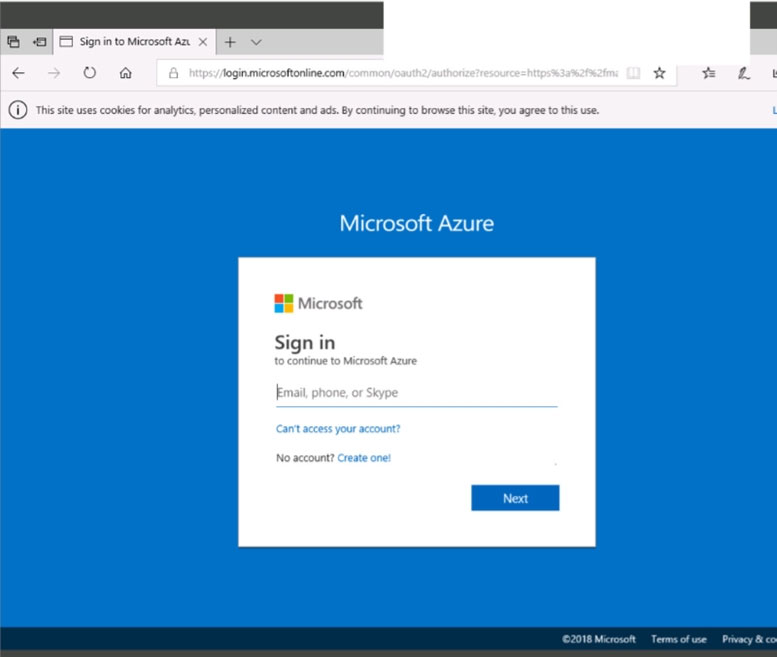
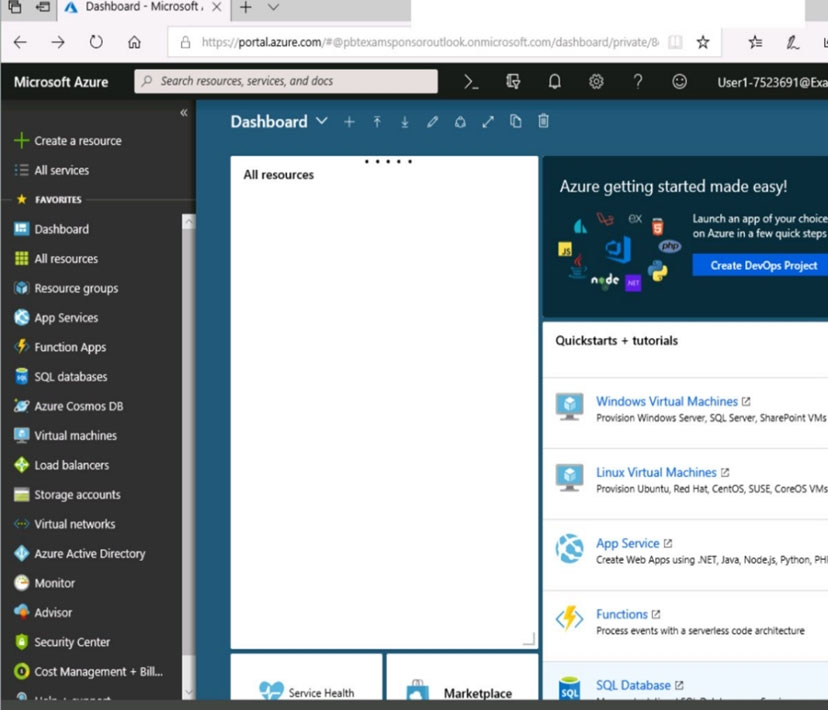
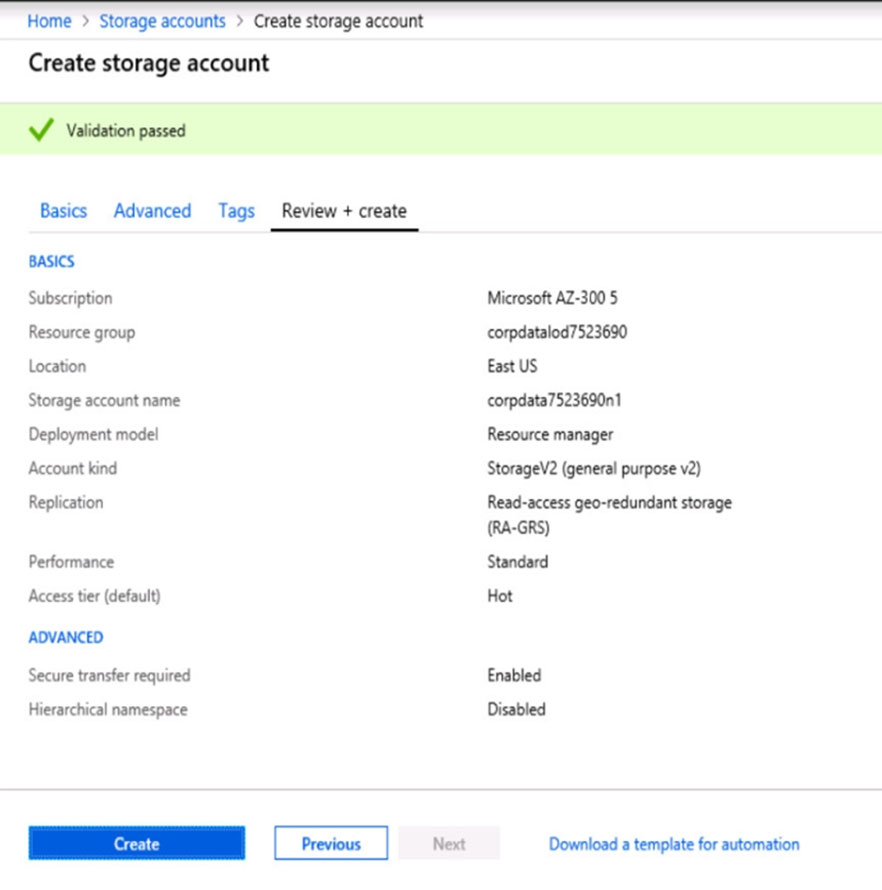
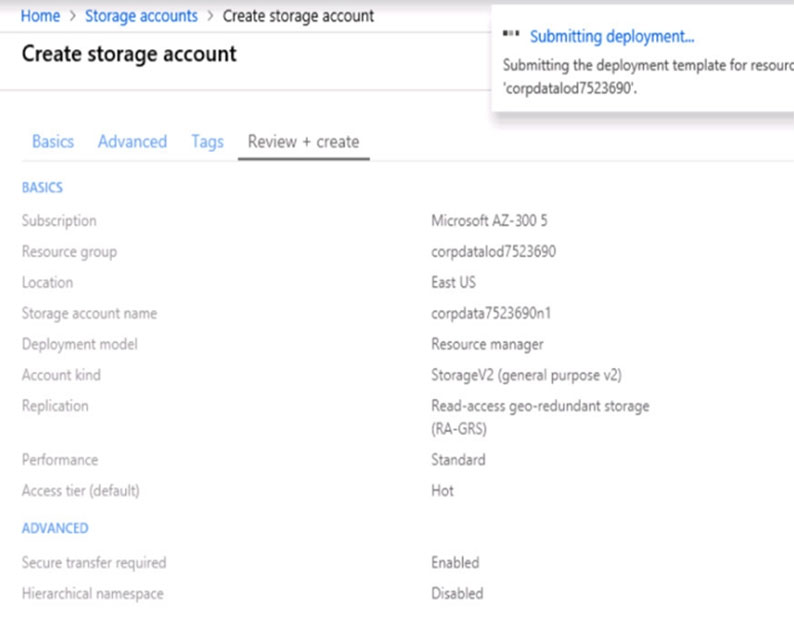
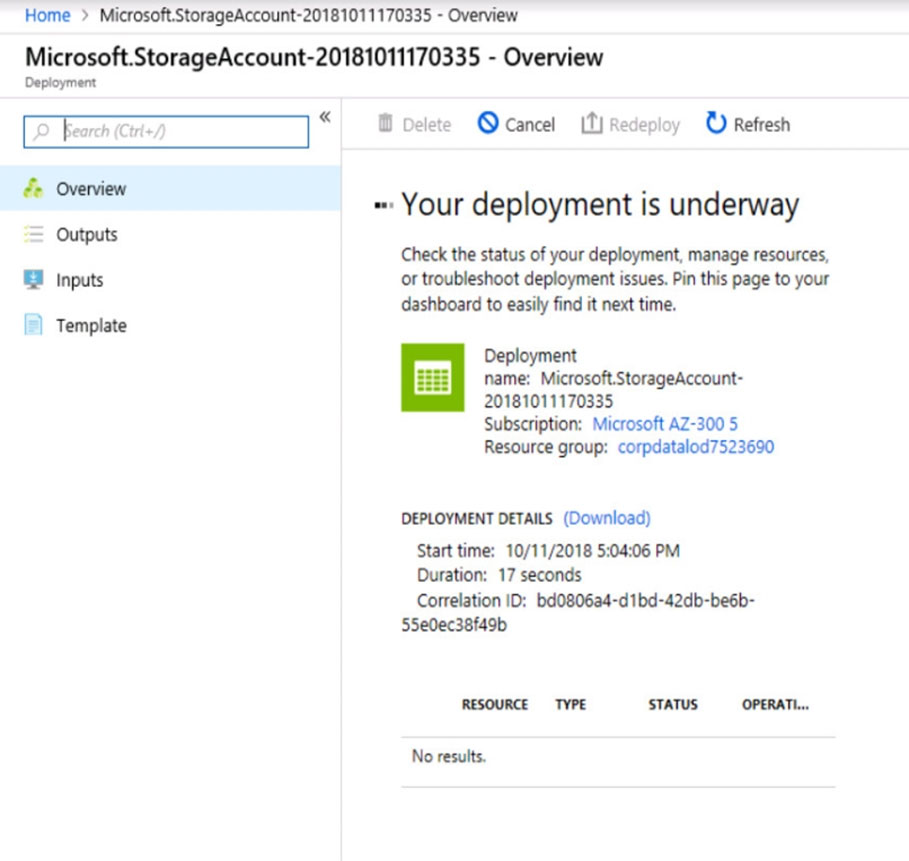
When you are finished performing all the tasks, click the `˜Next' button. Note that you cannot return to the lab once you click the `˜Next' button. Scoring occur in the background while you complete the rest of the exam. Overview - The following section of the exam is a lab. In this section, you will perform a set of tasks in a live environment. While most functionality will be available to you as it would be in a live environment, some functionality (e.g., copy and paste, ability to navigate to external websites) will not be possible by design. Scoring is based on the outcome of performing the tasks stated in the lab. In other words, it doesn't matter how you accomplish the task, if you successfully perform it, you will earn credit for that task. Labs are not timed separately, and this exam may have more than one lab that you must complete. You can use as much time as you would like to complete each lab. But, you should manage your time appropriately to ensure that you are able to complete the lab(s) and all other sections of the exam in the time provided. Please note that once you submit your work by clicking the Next button within a lab, you will NOT be able to return to the lab. To start the lab - You may start the lab by clicking the Next button. You plan to create several virtual machines in different availability zones, and then to configure the virtual machines to load balanced connections from the Internet. You need to create an IP address resource named ip1006 to support the planned load balancing solution. The solution must minimize costs. What should you do from the Azure portal?
You develop an entertainment application where users can buy and trade virtual real estate. The application must scale to support thousands of users. The current architecture includes five Azure virtual machines (VM) that connect to an Azure SQL Database for account information and Azure Table Storage for backend services. A user interacts with these components in the cloud at any given time. ✑ Routing Service `" Routes a request to the appropriate service and must not persist data across sessions. ✑ Account Service `" Stores and manages all account information and authentication and requires data to persist across sessions ✑ User Service `" Stores and manages all user information and requires data to persist across sessions. ✑ Housing Network Service `" Stores and manages the current real-estate economy and requires data to persist across sessions. ✑ Trade Service `" Stores and manages virtual trade between accounts and requires data to persist across sessions. Due to volatile user traffic, a microservices solution is selected for scale agility. You need to migrate to a distributed microservices solution on Azure Service Fabric. Solution: Deploy a Windows container to Azure Service Fabric for each component. Does the solution meet the goal?
A. Yes
B. No
DRAG DROP - You have virtual machines (VMs) that run a mission-critical application. You need to ensure that the VMs never experience down time. What should you recommend? To answer, drag the appropriate solutions to the correct scenarios. Each solution may be used once, more than once, or not at all. You may need to drag the split bar between panes or scroll to view content. NOTE: Each correct selection is worth one point. Select and Place:
HOTSPOT - Your company has offices in New York and Los Angeles. You have an Azure subscription that contains an Azure virtual network named VNet1. Each office has a site-to-site VPN connection to VNet1. Each network uses the address spaces shown in the following table:You need to ensure that all Internet-bound traffic from VNet1 is routed through the New York office. What should you do? To answer, select the appropriate options in the answer area. NOTE: Each correct selection is worth one point. Hot Area:
HOTSPOT - You have an Azure subscription. You plan to deploy an app that has a web front end and an application tier. You need to recommend a load balancing solution that meets the following requirements: ✑ Internet to web tier: - Provides URL-based routing - Supports connection draining - Prevents SQL injection attacks ✑ Web tier to application tier: - Provides port forwarding - Supports HTTPS health probes - Supports an availability set as a backend pool Which load balancing solution should you recommend for each tier? To answer, select the appropriate options in the answer area. NOTE: Each correct selection is worth one point. Hot Area:
Note: This question is part of series of questions that present the same scenario. Each question in the series contains a unique solution that might meet the stated goals. Some question sets might have more than one correct solution, while others might not have a correct solution. After you answer a question in this section, you will NOT be able to return to it. As a result, these questions will not appear in the review screen. You have an Azure subscription. You have an on-premises file server named Server1 that runs Windows Server 2019. You manage Server1 by using Windows Admin Center. You need to ensure that if Server1 fails, you can recover Server1 files from Azure. Solution: You create an Azure Storage account and an Azure Storage Sync service. You configure Azure File Sync for Server1. Does this meet the goal?
A. Yes
B. No
Note: This question is part of series of questions that present the same scenario. Each question in the series contains a unique solution that might meet the stated goals. Some question sets might have more than one correct solution, while others might not have a correct solution. After you answer a question in this section, you will NOT be able to return to it. As a result, these questions will not appear in the review screen. You have an Azure subscription. You have an on-premises file server named Server1 that runs Windows Server 2019. You manage Server1 by using Windows Admin Center. You need to ensure that if Server1 fails, you can recover Server1 files from Azure. Solution: You create a Recovery Services vault and configure a backup by using Windows Server Backup. Does this meet the goal?
A. Yes
B. No
Note: This question is part of series of questions that present the same scenario. Each question in the series contains a unique solution that might meet the stated goals. Some question sets might have more than one correct solution, while others might not have a correct solution. After you answer a question in this section, you will NOT be able to return to it. As a result, these questions will not appear in the review screen. You have an Azure subscription. You have an on-premises file server named Server1 that runs Windows Server 2019. You manage Server1 by using Windows Admin Center. You need to ensure that if Server1 fails, you can recover the data from Azure. Solution: From the Azure portal, you create a Recovery Services vault. On VM1, you install the Azure Backup agent and you schedule a backup. Does this meet the goal?
A. Yes
B. No
You create a new Azure subscription. You create a resource group named RG1. In RG1, you create the resources shown in the following table.You need to configure an encrypted tunnel between your on-premises network and VNET1. Which two additional resources should you create in Azure? Each correct answer presents part of the solution. NOTE: Each correct selection is worth one point.
A. a site-to-site connection
B. a VPN gateway
C. a VNet-to- VNet connection
D. a local network gateway
E. a point-to-site configuration
HOTSPOT - Your network contains an Active Directory domain that is synced to Azure Active Directory (Azure AD) as shown in the following exhibit.You have a user account configured as shown in the following exhibit.
For each of the following statements, select Yes if the statement is true. Otherwise, select No. NOTE: Each correct selection is worth one point. Hot Area:
You have an Azure subscription that contains a policy-based virtual network gateway named GW1 and a virtual network named VNet1. You need to ensure that you can configure a point-to-site connection from an on-premises computer to VNet1. Which two actions should you perform? Each correct answer presents part of the solution. NOTE: Each correct selection is worth one point.
A. Add a service endpoint to VNet1.
B. Add a public IP address space to VNet1.
C. Create a route-based virtual network gateway.
D. Reset GW1.
E. Delete GW1.
F. Add a connection to GW1.
You have an Azure Service Bus. You need to implement a Service Bus queue that guarantees first-in-first-out (FIFO) delivery of messages. What should you do?
A. Enable partitioning
B. Enable duplicate detection
C. Set the Lock Duration setting to 10 seconds
D. Enable sessions
E. Set the Max Size setting of the queue to 5 GB
You are building a custom Azure function app to connect to Azure Event Grid. You need to ensure that resources are allocated dynamically to the function app. Billing must be based on the executions of the app. What should you configure when you create the function app?
A. the Windows operating system and the App Service plan hosting plan
B. the Docker container and an App Service plan that uses the B1 pricing tier
C. the Windows operating system and the Consumption plan hosting plan
D. the Docker container and an App Service plan that uses the S1 pricing tier
HOTSPOT - You are creating an app that uses Event Grid to connect with other services. Your app's event data will be sent to a serverless function that checks compliance. This function is maintained by your company. You write a new event subscription at the scope of your resource. The event must be invalidated after a specific period of time. You need to configure Event Grid to ensure security. What should you implement? To answer, select the appropriate options in the answer area. NOTE: Each correct selection is worth one point. Hot Area:
You have an Azure subscription named Subscription1 that contains a virtual network named VNet1. VNet1 is in a resource group named RG1. Subscription1 has a user named User1. User1 has the following roles: ✑ Reader ✑ Security Admin ✑ Security Reader You need to ensure that User1 can assign the Reader role for VNet1 to other users. What should you do?
A. Assign User1 the Owner role for VNet1.
B. Assign User1 the Network Contributor role for VNet1.
C. Remove User1 from the Security Reader and Reader roles for Subscription1. Assign User1 the Contributor role for Subscription1.
D. Remove User1 from the Security Reader and Reader roles for Subscription1.
You have an Azure Active Directory (Azure AD) tenant. All administrators must enter a verification code to access the Azure portal. You need to ensure that the administrators can access the Azure portal only from your on-premises network. What should you configure?
A. the default for all the roles in Azure AD Privileged Identity Management
B. an Azure AD Identity Protection user risk policy
C. an Azure AD Identity Protection sign-in risk policy
D. the multi-factor authentication service settings
DRAG DROP - You are designing a solution to secure a company's Azure resources. The environment hosts 10 teams. Each team manages a project and has a project manager, a virtual machine (VM) operator, developers, and contractors. Project managers must be able to manage everything except access and authentication for users. VM operators must be able to manage VMs, but not the virtual network or storage account to which they are connected. Developers and contractors must be able to manage storage accounts. You need to recommend roles for each member. What should you recommend? To answer, drag the appropriate roles to the correct employee types. Each role may be used once, more than once, or not at all. You may need to drag the split bar between panes or scroll to view content. NOTE: Each correct selection is worth one point. Select and Place:
HOTSPOT - You have an Azure Active Directory (Azure AD) tenant that contains three global administrators named Admin1, Admin2, and Admin3. The tenant is associated to an Azure subscription. Access control for the subscription is configured as shown in the Access control exhibit. (Click the Exhibit tab.)You sign in to the Azure portal as Admin1 and configure the tenant as shown in the Tenant exhibit. (Click the Exhibit tab.)
For each of the following statement, select Yes if the statement is true. Otherwise, select No. NOTE: Each correct selection is worth one point. Hot Area:
Get More AZ-303 Practice Questions
If you’re looking for more AZ-303 practice test free questions, click here to access the full AZ-303 practice test.
We regularly update this page with new practice questions, so be sure to check back frequently.
Good luck with your AZ-303 certification journey!


